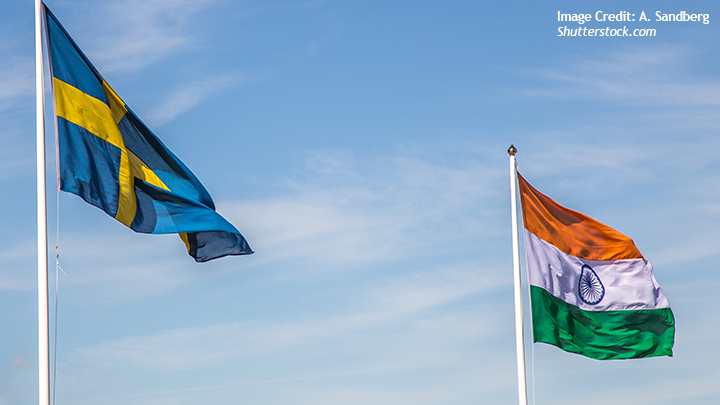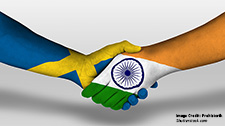India-Sweden Ties: Forging a Cohesive Partnership

Jagannath Panda, Niklas Swanström and Mahima Duggal
From areas like human rights and political differences to climate and sustainability, both countries often differ on certain points, sometimes causing friction in their bilateral relations. Most prominently, India and Sweden differ notably in their approach to Russia. While New Delhi sees Russia as a historical ally and key supplier of defense equipment, Sweden (and the EU at large) views Russia as an imminent security threat. These distinct approaches are shaped not only by their historical lenses, but also by their different strategic priorities and geopolitical alignments. Both countries have sought to manage these differences pragmatically while continuing to focus on other areas of cooperation.
Despite these challenges, the India-Sweden relationship is marked by mutual respect and underpinned by robust economic relations. Both are regarded as natural partners in that they share strong democratic values, pluralism, and institutional foundations. Although Russia remains a point of divergence, India and Sweden have thus far navigated the issue well. In fact, many voices in Europe would argue that the strategic value of EU-India relations outweighs disagreements, and there is a need to continue to interact and collaborate on points of convergence. India’s rising economic and strategic profile underscores its strategic importance for Sweden. As the world’s fifth-largest economy, India is a hub for trade, investment, and innovation, attracting global attention with its thriving start-up ecosystem and ambitious digital transformation. Strategically too, India occupies a pivotal location in the Indo-Pacific, serving as a key player in regional and global security. On its part, Sweden is an important economic and strategic partner for India due to its advanced technological capabilities, focus on sustainability, and alignment with India’s developmental priorities.
Looking forward, while collaborations in sustainability, innovation, and defense have grown, deeper engagement in areas like digital transformation, healthcare innovation, and advanced manufacturing could unlock new opportunities. Trade volumes, though increasing, still do not reflect the full potential of both economies. Greater investment and technology
transfer, particularly in green hydrogen and renewable energy storage, could amplify outcomes. Furthermore, stronger people-to-people connections, academic exchanges, and cultural partnerships can enhance mutual understanding.
Related Publications
-
India-Nordic Budding Dynamics: Sweden, a Vital Gateway?
The India-Nordic summits in 2018 and 2022 had the clearly outlined goal of the expanding strategic coordination between India and the Nordics. The spike in trade reflects a healthy economic […]
-
ISDP-Embassy of India in Sweden Dialogue Calls for Focusing Momentum in India-Sweden Ties
Focus on six key areas: Science & Technology, Innovation, Energy, Sustainable Development, Defense, and Trade Economics. The partnership between India and Sweden can be replicated as a model for the […]
-
India-Sweden Strategic Compass: January-February 2025
The evolving geopolitical landscape, particularly marked by the U.S.-China rivalry, is indeed prompting nations to reassess their diplomatic strategies and realign their foreign policies. For countries like India and Sweden, […]
-
India-Sweden Ties as a Gateway to India-Nordic Engagement
Executive Summary Sweden and India engage on three interconnected levels: bilaterally, through the Nordic region, and through the EU—all of which require consistent political attention and a structured strategic approach. […]
-
Minilateralism and the new Indo-Pacific order: Theoretical ambitions and empirical realities
This introductory paper sets the stage for the research essays in the special issue titled “Minilateralism and the new Indo-Pacific order: theoretical ambitions and empirical realities”. It provides an overview […]




